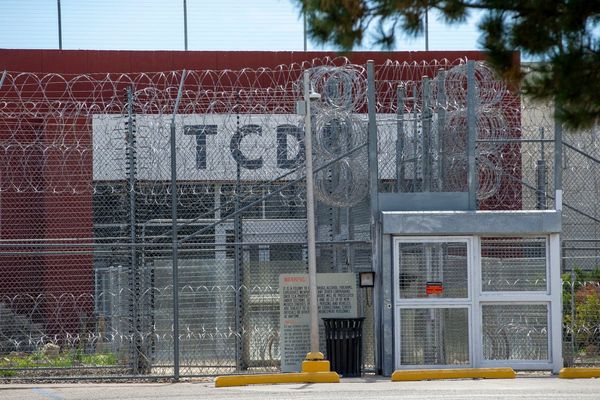
Heading into a retirement community should promise peace of mind, not financial worry. Yet in recent years, several Continuing Care Retirement Communities (CCRCs) have teetered on or slipped into insolvency, leaving residents facing lost homes or deposits. Understanding which communities are at risk—and why—helps retirees and their families act before it’s too late. This guide dives into eight retirement communities making headlines for financial trouble. Read on to see if your community is on the list—and what precautions to take.
1. Harborside (Port Washington, NY)
Harborside filed for Chapter 11 in early 2025 after amassing roughly $130 million in refundable deposit obligations. A court-approved sale keeps apartments open as rentals, but residents will lose about 67–75% of their entrance fees. The deal also ends life-care contracts, disrupting future healthcare access. Long-time residents now risk eviction from essential care services. It’s a stark warning that even large CCRCs can unravel suddenly.
2. Pacifica Senior Living
Pacifica Senior Living—among the top 10 largest U.S. senior living operators—filed for Chapter 7 bankruptcy in April 2025. With only $100,000 in assets against up to $50 million in liabilities, its entire portfolio of 92 properties is set for liquidation. Residents and creditors will scramble for refunds and support services. If your community is run by Pacifica, it’s critical to track the bankruptcy process. Don’t assume private providers always outlast financial trouble.
3. Tampa Life Plan Village (FL)
Florida regulators found that Tampa Life Plan Village violated insurance laws and misused resident fees, resulting in a collective loss of $30 million. The state insurance commissioner has referred the case for criminal investigation under claims of neglect and mismanagement. Residents were left without the promised shelter or nursing care. If you’re in Florida, check for official warnings and participate in investigations to protect your interests.
4. Aldersgate (Charlotte, NC)
North Carolina’s insurance department placed Aldersgate under state supervision in 2023, citing mounting liabilities exceeding assets by $40 million. The facility failed to provide mandated financial disclosures to bondholders and required regulators. As it works through corrective plans, service fees and entrance deposits remain at risk. Residents and family members must review audited financial statements regularly. Oversight gaps don’t fix themselves.
5. Unisen (Tampa, FL)
Unisen Senior Living filed for bankruptcy in April 2024—part of a growing trend of CCRCs defaulting on entrance-fee refund obligations. Court filings show entrance fee return timelines stretched out, some as long as 18 years in Dallas. That means many residents may never see their money back. Those entering Unisen or similar communities should demand full contract disclosure before moving in.
6. Other CCRCs Since 2020
Since 2020, at least 16 CCRCs have entered bankruptcy, with many more facing cash-strapped futures. These closures impact hundreds of residents, many losing deposits and guaranteed services. A downturn in new admissions and rising staffing costs are the primary drivers. As a result, the entire sector faces systemic financial instability. Knowledge of national CCRC trends helps residents anticipate risk.
7. Vi Senior Living
Vi Senior Living, a luxury CCRC brand, has been the subject of class-action suits over failure to maintain refund reserves as required by state law. Courts have acknowledged that lacking reserve funds puts residents in “financial insecurity” even without insolvency. California’s continuing care residents reached settlements after funds were diverted to the parent company. If you live in a Vi community, insist on transparent reserve-account audits. Promises without reserves equal risk.
8. Erickson Senior Living
Erickson, once a billion-dollar CCRC operator, declared bankruptcy in 2009 and was restructured, but the past raises concerns. Though it rebounded under new ownership, its legacy of financial vulnerability warrants scrutiny. Residents should probe parent-company financial reports and access to reserve funds. Relying on past performance could obscure future risks. Always analyze current data.
Red Flags and What You Can Do
These stories underscore systemic risks across CCRCs. To protect your interests:
- Request audited financial statements annually—don’t accept vague summaries.
- Watch announcement bulletins from state insurance or banking regulators.
- Review contract terms, including refund policies and reserve requirements.
- Evaluate occupancy rates—declining admissions = shrinking revenue.
- Hire an eldercare attorney or financial advisor before signing entrance-fee contracts.
Knowing warning signs helps you spot trouble early enough to act.
Protecting Your Retirement Haven
Retirement communities can deliver comfort and care, but only if finances are sound. Being a savvy homeowner means staying engaged, asking tough questions, and responding to red flags. Your nest egg deserves more than assumptions. Take charge, and transform hope into security.
Are you—or a loved one—living in a retirement community? Have you experienced financial uncertainty firsthand? Share your story below to help others navigate the risks.
Read More
7 Retirement Dreams That Turn Into Nightmares Without Planning
8 Retirement Side Hustles the IRS Is Quietly Watching This Year
The post 8 Retirement Communities Facing Financial Trouble—Is Yours on the List? appeared first on Clever Dude Personal Finance & Money.







